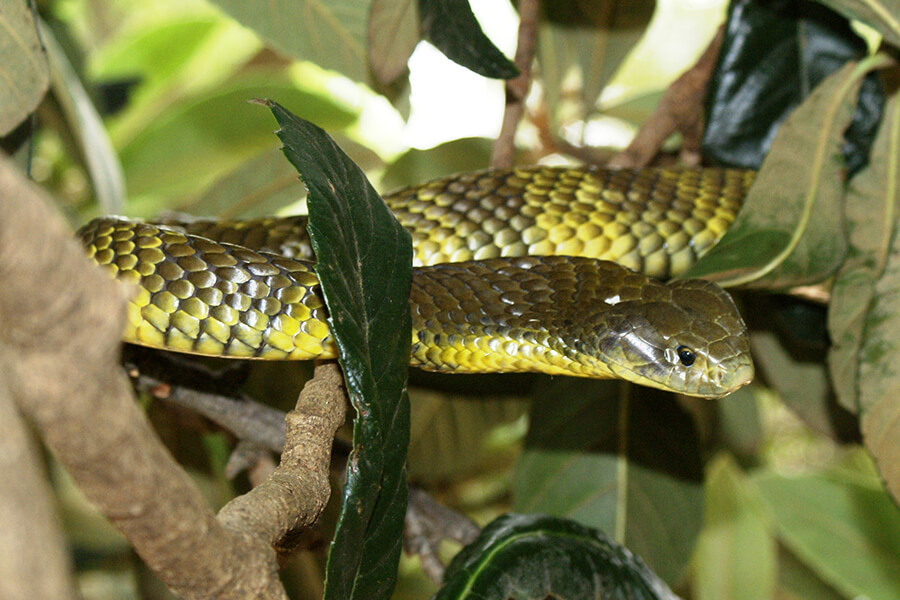Introduction
Tiger serpents (Notechis scutatus) are amongst the most fascinating yet feared reptiles located in Australia. With their striking appearance and powerful venom, these snakes stimulate a mixture of awe and caution. Observing tiger snakes in their native environment can be an exciting experience for nature enthusiasts, wild are yellow faced whip snakes venomous animals professional photographers, and researchers alike. Nevertheless, it's essential to approach this undertaking with regard for the pet's environment and an understanding of safety measures to prevent serpent bites.
In this detailed overview, we'll check out just how to securely observe tiger snakes in their natural habitat. We will certainly cover topics varying from understanding their behavior and habitats to first aid for serpent attacks-- furnishing you with knowledge to improve your experience while decreasing threats.
What is a Tiger Snake?
Tiger serpents are very venomous serpents belonging to Australia, especially Tasmania and coastal regions. They are recognized for their unique grouped coloration looking like a tiger's stripes, which can range from yellowish-brown to dark brown or even black.
Physical Characteristics
Tiger snakes are medium to large-sized serpents that can grow up to 2 meters long. Their bodies are robust, and they have a wide head that is noticeably broader than their necks.
Habitat Preferences of Tiger Snakes
These reptiles typically populate wetlands, tidewaters, and seaside areas yet can also be discovered near freshwater sources like rivers and lakes. Recognizing where these serpents live is critical for any individual seeking to observe them safely.

Understanding Tiger Serpent Behavior
Are Tiger Snakes Venomous?
Yes, tiger snakes are amongst one of the most poisonous serpent varieties worldwide. Their venom consists of neurotoxins that can cause significant medical complications if bitten.
Behavioral Traits
Tiger snakes are normally shy creatures; they prefer to avoid human interaction. Nonetheless, they can end up being hostile if threatened or caught.
Where Can You Discover Tiger Snakes?
Tiger Snake Environment Exploration
To securely observe tiger serpents in their natural environment, it's necessary initially to recognize where they prosper. They tend to prefer:
- Coastal marshlands Mangroves Swamps Riverbanks
Best Locations for Observation
Some recommended locations include:
- Tasmanian wetlands The coasts of southern Australia National parks with water bodies
Safety Precautions Before Observing Tiger Snakes
Understanding the Dangers of a Tiger Snake Bite
Although experiences with tiger serpents can be thrilling, recognizing the threats included is paramount:
Recognize symptoms of a serpent bite: swelling at the site, pain radiating from the bite area. Know emergency calls: Acquaint yourself with neighborhood emergency situation services. Carry a first-aid package particularly geared up for serpent bites.First Help for Serpent Bites: What You Required to Know
Knowing what steps to take if bitten can save your life or another person's:
- Stay tranquility; movement raises venom spread. Call for clinical assistance immediately. Do not apply ice or attempt suctioning.
How to Securely Observe Tiger Snakes in Their Natural Habitat
When you determine to observe tiger snakes in the wild:
Dress Appropriately: Put on long pants and durable boots. Use Binoculars: Maintain a risk-free distance while observing these reptiles. Avoid Unexpected Movements: Quick motions might shock them. Stay on Developed Trails: Avoid straying right into thick underbrush where presence is low.Equipment Needed for Observation
Essential Equipment Checklist
- Binoculars First-aid kit specifically created for snake bites Field guidebook on Australian reptiles Camera (with zoom ability)
Snake Bite First Aid Package Essentials
A well-appointed first aid kit must consist of:|Item|Purpose|| -------------------------------|-------------------------------|| Compression bandage|To immobilize the damaged location|| Antihistamines|For allergies|| Emergency situation contact numbers|Quick access during emergency situations|
Interpreting Tiger Serpent Signals
Understanding how tiger snakes connect via body language assists observers evaluate when it's safe or hazardous:
Common Behaviors
Defensive position: If coiled or elevated off the ground. Retreating habits: When they gradually back away from potential threats.Dealing With Possible Encounters
Even with safety measures taken, an encounter might still happen during your monitoring trip:
Remain calmness; worrying just enhances risks. Slowly retreat without transforming your back on the snake. Make your visibility understood verbally yet stay clear of abrupt movements.Frequently Asked Questions Regarding Tiger Snakes
1. What need to I do if I see a tiger snake?
Remain tranquility; observe from click here a rough scaled snake distance without troubling it.
2. Are infant tiger snakes dangerous?
Yes, adolescent tiger snakes are born venomous and may pose threats similar to adults despite being smaller.
3. Just how usual are tiger serpent bites?
While cases take place every year in Australia, casualties are uncommon as a result of timely treatment availability.
4. Can I keep a tiger snake as a pet?
Keeping wild tiger snakes as family pets is prohibited in numerous areas because of conservation laws.
5. What does a tiger snake attack look like?
Bite marks typically show two puncture wounds in addition to local swelling and discoloration.


6. How efficient is antivenom?
Antivenom therapy is extremely effective when carried out prompt after a bite.
Conclusion
Observing tiger serpents in their all-natural environment provides an electrifying possibility for wildlife lovers however must be come close to with care and regard for both the creature and its atmosphere. By equipping on your own with understanding about these remarkable reptiles-- consisting of comprehending their behaviors and precaution-- you can take pleasure in remarkable experiences while substantially decreasing risks connected with encounters.
In recap, constantly focus on security by preparing adequately prior to embarking on any type of wildlife observation expedition-- particularly when taking care of a few of nature's most poisonous animals like the tiger snake!